Accessibility - Faculty Portal

Blackboard Ally allows you to automatically check for accessibility issues and generate alternative accessible formats using advanced Machine Learning algorithms. Accessibility indicators can now be seen next to each document you upload in your Brightspace course:
Accessibility
Creating accessible instructional materials is an essential element of course design. Accessible content supports ALL learners. Frequently students may have a disability and do not disclose to the campus or instructor. Even learners without documented disabilities benefit from accessible materials. For example, captions can be used if there is a need for quiet or privacy, if the speaker in the video talks fast or has an accent, or for non native English speakers. NOTE - It is important to check the captions for accuracy, especially if there is an accent or technical terminology.
All students must have the opportunity to:
- access the same information.
- equal opportunity to achieve results.
- participate in the same interactions.
- experience equal services/content/materials/assessments.
- Font is simple and easy to read.
- Language, abbreviations and acronyms are defined.
- Links are descriptive - not "Click Here" or URL.
- Videos are captioned and captioning is checked for accuracy. The good news here is all Kaltura videos include captioning and checking for accuracy is very simple.
- Color contrast is sufficient. If using color it is important to make sure the background colors contrast from the text or image colors.
- Color does not convey meaning - Example - Due dates are in red (indicated by the word "red"). A person with vision issues or color blindness may not be able to identify text in red alone.
- Images have alternative text descriptions.
- Flashing content is not used.
- Tool bar is used for formatting headings, lists, bullets, and tables. Tables require checking reading order, columns, and row headers.
- Audio is transcribed and checked for accuracy.
The ACCESS Course is a self-paced, as needed course in Brightspace. You can look through the content in order or for specific needs. The course is a resource and no work is requiredd.
Do you ever look at the Ally score in your course and wonder - what does that mean or how can I make that green? Do you get accommodation notices and need to know how to check your course content to make sure it’s accessible? We’ve got some help for you!
ACCESS (Accessible Content Creation that Ensures Support and Success) provides a free self-paced opportunity to learn the essential skills of creating content that is accessible to everyone, regardless of abilities. You will learn about why it’s important to consider your audience’s needs when creating content and how to make sure that it’s accessible to all users. Topics include:
- Understanding Accessibility
- Accessible Audio and Video
- Accessible Documents
- Accessible Presentations
- Accessible Spreadsheets
- Accessible PDFs
- Making use of the Ally tool in Brightspace
Considering accessible content and course design is crucial in today's diverse classroom environment. By embracing accessible content design, you not only enhance learning outcomes but also demonstrate your commitment to inclusivity and student success.
This resource is accessed by self-enrollment and there is no work due ever. It’s an open resource that you can access as needed. To enroll, please use this link ACCESS and then click enroll. Email jessica.ludders@maine.edu for more information.
Who is impacted by inclusion of accessible materials? Often students may have a disability and choose not to disclose for various reasons or they may have a preference for how they access content. Individuals who:
- Are blind/have low vision.
- Are deaf/hard of hearing.
- Are unable to use a mouse or keyboard.
- Have learning disabilities.
- Have difficulty reading.
- Have different learning styles.
- Are in a public location and cannot access audio content without disrupting others or ability to maintain privacy.
It is important to check (and recheck) documents and content in your courses for accessibility. Some check items require manual checking, others have a built in accessibility checker.
Designing your course to be accessible takes time and practice. In the long run it is worth it for you and your students. Some changes are relatively easy to implement, others may take more time or thought. Checking accessibility can sometimes be accomplished with a built in checker but some things you simply need to "eyeball" and look manually. Some things you may be doing already!
A 2023 WebAIM audit found that nearly 97% of the world's 1 million most popular web homepages had web accessibility errors (WebAIM, 2023). These findings are consistent with similar studies conducted for the previous 4 years indicating little improvement. Accessibility is important and improvements need to be made.
It is important to be proactive rather than reactive. Creating accessible documents initially is much easier and less time consuming than have to revise and update documents. It also saves you stress and pressure if you do have a student with the need for accommodations.
This document is a brief checklist to review your content to check for accessibility.
Maine CITE is a Maine Department of Education program to support ALL Maine people with assistive technologies and resources. Maine CITE has a resource center on the Augusta campus in Katz.
Link to a brief video (2:53) showing and example of the JAWS screen reader reading a sample of inaccessible and accessible content to demonstrate the difference (Normandale OnlineEducation, 2010).
Link to a video (5:57) sharing the experiences of higher education students and faculty with disabilities (GOALSatNCDAE).
References:
GOALSatNCDAE. (2012). A Personal Look at Accessibility in Higher Education. Retrieved from https://www.youtube.com/watch?v=PQGFshzLPXE&t=1s
Maine Cite. (2023). Creating Accessible Content webinar. Retrieved from https://mainecite.org/training/creating-accessible-content-3/
Normandale OnlineEducation. (2010). Accessible vs. Inaccessible - Can You Hear the Difference. Normandale Community College. Retrieved from https://www.youtube.com/watch?v=5TNU_t-9w1A
WebAIM. (2022). The WebAIM Million. Retrieved from https://webaim.org/projects/million/
